Container Shipping Turmoil Spills Over Into 2023, says Xeneta's Sand
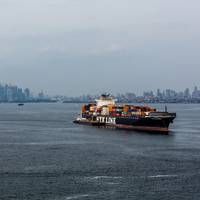
As container shipping demand continues to fall into the New Year, Xeneta Chief Analyst Peter Sand weigh in with his insights on the pace and direction of spot and contract rates; the likelihood of ship lay-ups and scrapping in 2023; plus the impact that West Coast port labor strife will have on the industry as a whole, as the East Coast U.S. emerges as the dominant player.To start us off, what do you see as far as falling demand and the blank sailings of container ships leading up to the Chinese New Year.Peter SandWhat I see in the market right now is quite dramatic, almost unprecedented.
Analysis: Meltdown in the Container Shipping Sector Gains Speed
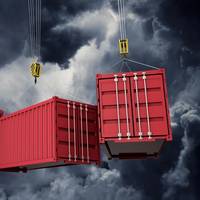
Facing global economic headwinds, the volume of containerized cargo movement continues to plummet, Peter Sand, Chief Analyst, Xeneta, summarizes: “It is clear that the carriers are no longer in charge, the shippers are.”Peter, it seems like the news in the container shipping sector started as a flow and has turned into a torrent. There was some data released yesterday that showed a 9.1% drop in September year on year for dry containers, and a 2.3 decline in the reefer sector.
BIMCO: Global Container Volumes Projected to be Down 1.5% for 2020

Despite the alarming headlines in the spring of last year, container shipping proved remarkably resilient in 2020 in terms of volumes as well as freight rates. After a 5.0 million TEU (7.3%) drop in volumes in the first five months of the year, volumes were down by only 1.7% - a loss of 2.6 million TEU – by the end of November.Of the three largest trades, Far East to North America has been the best performing, up by 1.1m TEU (6.4%) in the first 11 months of the year. The last few months have been the strongest for this trade…
Maersk: Container Outlook Uncertain
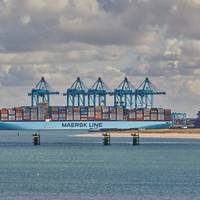
A.P.
Xeneta Expects Further Disruption in Container Rates
Further disruption in ocean freight rates expected despite best efforts from leading carriers, according to Xeneta Container Rates Alert.Long-term contracted ocean freight rates for carriers continued their downward trend through the month of October, it pointed out.The latest freight data from the XSI Public Indices report from Xeneta shows a continued drop in contracted freight rates as the industry heads into the key seasonal months.Rates on a number of key routes have continued a steady downward slide since early summer but have yet to fall below the levels seen one year ago, nor at the start of this year.The company’s XSI (Xeneta Shipping Index) which reports on the long-term contracted market…
Maersk Lifts 2019 Profit Forecast; Shares Rise
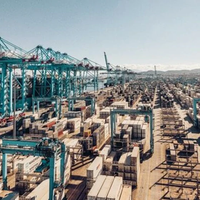
Danish shipping company A.P.
Fitch Ratings: Demand Risks Weigh on Global Shipping Sector Outlook
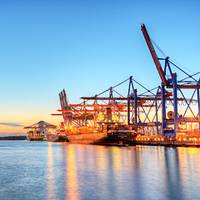
The global shipping sector outlook remains negative reflecting the demand-side risks of protectionism and slower economic growth, Fitch Ratings says. Higher fuel costs and sulphur regulation will also put pressure on shippers.Partly offsetting an unfavourable environment are emerging signs of better capacity management by shipping companies, which is key to a sustainable balance and freight rates that support consistent profitability. We expect better fundamentals in container and dry bulk…
Drewry Downgrades Forecast for Container Demand
A gloomier world economic outlook and rising trade tensions have forced Drewry to downgrade its forecast for container demand over the next five years, according to the global shipping consultancy’s latest edition of the Container Forecaster.Drewry’s long-term supply and demand prognosis for carriers has deteriorated since the last report. Previously, the company’s global supply-demand index was expected to take incremental steps upwards through 2022, by which time the industry would at long last be close to equilibrium.However, the new forecasts suggest that the industry now faces being stuck with the current over-supplied situation for several more years.“The anticipated re-balancing of the container market looks to have been postponed.
Peak Season Promises Better Box Freight Rates -MSI
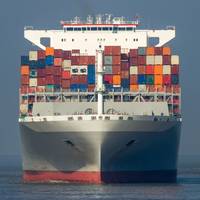
After a pattern of divergence at the start of the year, July saw a modest realignment between charter and freight markets as liner operators react to cost pressures and the wider industry awaits the impact of the potential trade war between the U.S. and China, according to the latest Container Shipping Forecaster from MSI.Following an impressive run since the end of 2017, timecharter earnings have leveled off in recent weeks, a slowdown that began with smaller feeder vessels and has now spread to larger units.
Fitch: Profitable May be Tough for Container Shippers
Fitch Ratings-London-01 March 2018: Sustaining last year's improved profitability in 2018 may prove challenging for container shipping companies, Fitch Ratings says. The fact that some companies are likely to have remained loss-making in 2017 highlights the ongoing weakness in sector fundamentals due to persistent overcapacity, which may undermine a longer-lasting recovery. Financial reports or preliminary results released so far indicate that container shipping companies had stronger performance in 2017 than 2016. We expect most carriers to have boosted profitability, although performance varies company by company. Maersk Line generated EBIT of USD634 million in 2017 compared to a loss of USD421 million in 2016…
Ferbec Officially Joins Canada Steamship Fleet
Canada Steamship Lines welcomed M.V. Ferbec, a 49,502 DWT conventional geared bulk carrier equipped with four cranes and grabs, which is now fully operational in the Gulf of Saint Lawrence. The vessel, which previously operated in CSL’s Australian fleet as CSL Melbourne, is the largest vessel of its type in the Canadian domestic shipping market. Upon arrival in Québec City on May 13, 2017, the vessel underwent modifications to adapt to its new operating environment. Ferbec is now operating under Canadian flag in the Havre St-Pierre to Sorel corridor for long time-customer Rio Tinto. “It is by design and with great pride that we revived the name Ferbec for this vessel,” said Louis Martel, President and CEO of The CSL Group.
OSV Companies Running Out of Options -Study
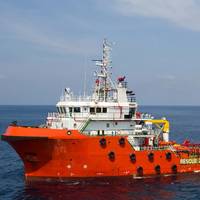
As oil continues to sell below $50 per barrel, 2017 could be one of the toughest years in decades for Offshore Supply Vessel (OSV) companies, according to a study of 44 companies in the industry by AlixPartners. The firm’s analysis highlights these companies’ rising debt burdens, making it increasingly unlikely that most of them can maintain solvency. The industry faces grave financial pressure, which is clear from recent bankruptcy filings and distressed mergers. Exploration and production (E&P) companies have drastically reduced their rig counts, causing demand for OSV services to plunge.
Fitch: Boxship Rates Rise, Capacity Still Key
Fitch Ratings' Report: What Investors Want to Know: Container Shipping. Container shipping companies have benefited from a modest increase in freight rates since the start of the year, but a sustainable recovery in the container market will only be achieved by reaching a viable supply/demand balance through capacity cuts, Fitch Ratings says. Container transport volumes outstripped capacity growth in 2016 for the first time since 2010-2011, helped by a higher rate of vessel scrapping and delayed deliveries. We expect this to be only a temporary reversal, as net capacity growth will accelerate in 2017 and 2018, exceeding demand growth and contributing to increased overcapacity.
Maersk Line Deploys First Second-gen Triple-E
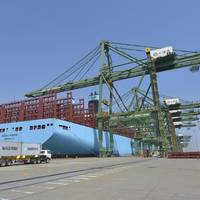
Four years after the arrival of the first Triple-E vessel, Maersk Line has now deployed Madrid Maersk, the first of its second-generation Triple-E containerships. With nearly 2,000 more TEU capacity than the prior generation Triple Es, the 20,568 TEU (nominal capacity) Madrid Maersk has set sail on Maersk Line’s Asia – Europe service network, calling the Port of Tianjin in China on April 27 as its first port on its maiden voyage. Madrid Maersk is the first to enter service of the 27 new vessels ordered by Maersk Line in 2015.
Fitch: M&A, Not Alliances to Help Revive Container Shipping
Mergers and acquisitions, rather than the historically more popular alliances, are inevitable to address chronic overcapacity and drive further cost savings in container shipping, Fitch Ratings says. The merger talks between Hapag-Lloyd and United Arab Shipping Company (UASC) announced last week demonstrate that full-blown M&A deals are gaining momentum. Although capacity on the Far East to Europe trade routes is dominated by just four alliances - 2M (36% of the total fleet capacity in September 2015, according to A.P. Moller-Maersk), CKYHE (24%), Ocean Three (21%) and G6 (18%) - container shipping remains effectively fragmented, highly competitive and plagued by overcapacity.
CMA CGM to Delay Mega-Ship Move
CMA CGM Group has decided to postpone its project to deploy 18,000 TEU-capacity vessels on Transpacific market trade. The much-anticipated launch of a weekly service with six mega-ships which was planned for the end of May has been delayed in order to optimise the use of its fleet. The decision also comes as the company is rolling out an alliance with China’s Cosco Group and other rivals. French container shipping major has now signed a deal with COSCO Container Lines, Evergreen Line and Orient Overseas Container Line on creation of a new alliance, dubbed the Ocean Alliance. Analysts say CMA CGM’s new partners would not have welcomed the addition of more capacity on a route where they’re already struggling to generate profits.
Container Shipping Market Move from Bad to Worse
A record volume of capacity entered the container markets in 2015. But where have the ships been deployed, and which carriers have taken on the most? The shipping consultants Drewry released their container shipping review for the first quarter 2016, and the outlook does not look positive. The drop in newbuild containership orders could be continued as container shipping companies seem to be running out of profitable trades to deploy their big ships, in turn leading to a decrease in the economic imperative and the financial ability to order new vessel. “Last year was full of records in the container shipping industry, but unfortunately for carriers they were mostly of the unwanted variety.
Container Shipping Approaching Crucial Trigger Point - Drewry
Further expected container shipping liner losses throughout the first half of 2016, exacerbated by the awful prevailing spot and contract freight rates will lead to a major trigger point at some stage later this year. This will happen either through radical capacity management at the trade route level and/or a much more sensible and logical approach to commercial pricing, according to the latest Container Forecaster report published by global shipping consultancy Drewry. Global rate levels are no longer sustainable and with the lines’ GRI mechanism soon to be defunct on European trades due to new EU regulations that are about to be implemented, carriers will need to find new tools.
Drewry: Deeper Capacity Cuts Required
What should have been acceptable ship utilisation figures last year didn’t prevent spot rates from falling to historic lows. Carriers will need to intensify their capacity management tactics in 2016 if they are to reverse the trend. The immediate answer is that they were actually pretty close to full with ship utilisation on headhaul East-West services averaging 87% over the course of the year. This was down on 93% ship utilisation for 2014 as reported in our most recent Container Forecaster report, but nonetheless the decrease was not of the magnitude that can fully explain the rates blood-bath that ensued. Considering the seasonal peaks in volumes, carriers did a reasonable job of matching supply with demand on a monthly basis.
NOL Posts Loss
Neptune Orient Lines (NOL), the parent of containerline, APL, narrowed its fourth-quarter loss to US$75.45 million as the shipping company cut costs amid ongoing weakness in the industry. For the full year, NOL swung to a net profit of US$707.2 million, or 27.27 US cents per share, from a year-ago loss of US$259.8 million. Revenue fell 28 per cent during the quarter to US$1.3 billion amid planned capacity cuts, void sailings, weak container trade demand and a challenging freight rate environment. "The fourth quarter was particularly a difficult quarter for the liner industry as a whole," Ng Yat Chung, group president and CEO said. But NOL also reduced cost of sales by 28 per cent to US$1.2 billion, while cutting operating expenses by 29 per cent to US$135.6 million.
Maersk Posts Record Profit Despite Pressure in Shipping Rates
Maersk Line has reported a profit of $2.3bn for 2014 a 50% increase over the previous year, and expects a higher result in 2015, though the shipping rates remain under pressure. But 2015 is expected to yield less impressive results due to falling oil prices. He said that he was satisfied with the 2014 results. “Despite challenging market conditions we saw good progress in underlying performance across the Group,” he said. Maersk Line maintained its lead on the rest of the industry and APM Terminals delivered significant improvements. Maersk Drilling executed on fleet renewal program according to plan, while Maersk Oil increased entitlement production in line with expectations, he added. Underlying profit of A.P.
Cost-Cutting Container Carriers Forge Ahead: Analysis
As freight rates keep declining, cost reductions are the top priority for box carriers, according to Drewry's 2Q14 'Container Forecaster', highlighting that there is a widening gap between the positive financials of the few carriers really focused on cutting costs and the rest of the top 20 lines, as they battle with the pressure of falling freight rates. Drewry forecasts that once again, average freight rates will be lower than in the previous year. Drewry estimates that on the headhaul transpacific trade alone, carriers have given away in the region of $1.25 billion in annual revenue via the lower annual contracts they signed with Beneficial Cargo Owner clients in May.
Container Shippers Battle Falling Rates
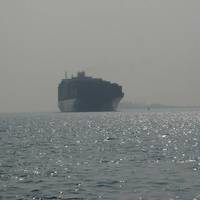
As freight rates keep declining, cost reductions are the top priority for box carriers. Drewry’s 2Q14 Container Forecaster highlights that there is a widening gap between the positive financials of the few carriers really focused on cutting costs and the rest of the top 20 lines, as they battle with the pressure of falling freight rates. Drewry forecasts that once again, average freight rates will be lower than in the previous year. Drewry estimates that on the headhaul transpacific trade alone…









